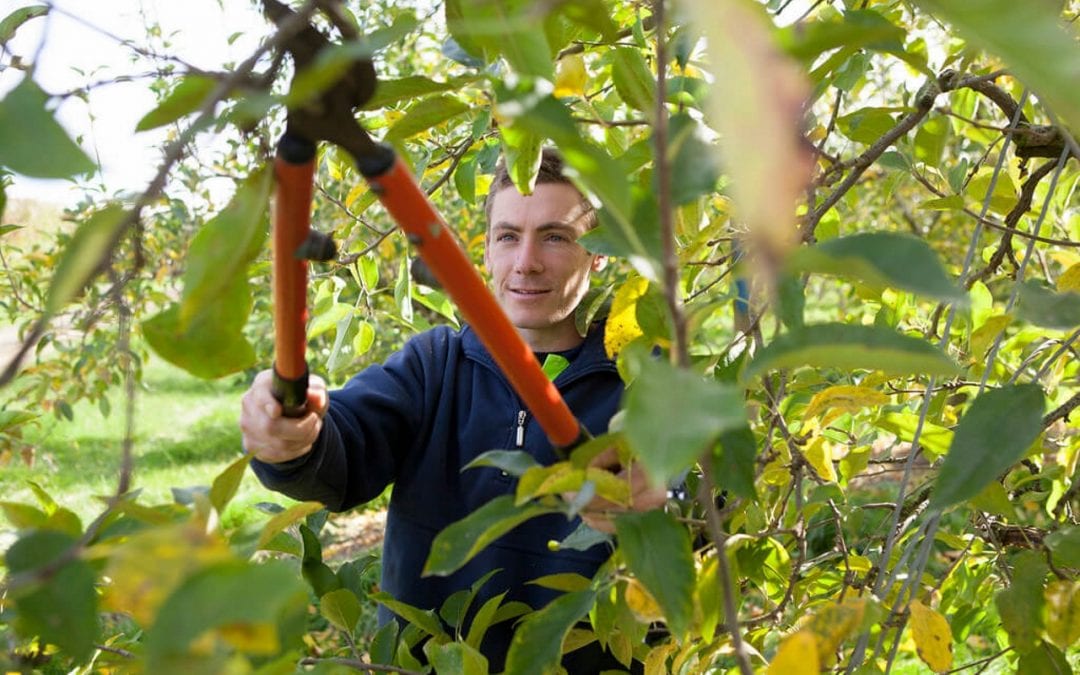
Tree Maintenance at Home: From Purchase to Pruning
From the moment a tree is selected for your home, care and maintenance begin. How you care for trees at home will affect their growth and health, especially in their early years. In fact, tree maintenance over the first few years affects the tree’s strength, shape, and lifespan. Follow these tips to ensure your tree gets a good start for a strong, healthy life.
Choosing Trees and Placement
When adding new trees, there are a few things to consider. First, you’ll want to have a clear idea of the tree’s purpose. Is it meant to provide aesthetics, shade, privacy, or serve as a windbreak?
Next, you should understand the limitations of the planting site. Know your hardiness zone. Estimate the maximum spread and height for a tree within the available space. Know the soil conditions and sun exposure. Get started with tree maintenance at home by putting careful thought into your choice of tree and its placement on your property.
Choose Healthy Trees to Get Started With Tree Maintenance
Because trees are transported in different ways, it is important to know what to look for with each variety. Grow trees at home more easily when they start out healthy and thriving.
- With bare-root seedlings, look for roots that are fibrous and moist. Seedlings for deciduous trees should have roots that are roughly equal to the length of the stem.
- Trees with roots that are wrapped in burlap should have a root ball that is firm to the touch, particularly near the trunk. Ensure the root ball is of sufficient size for the size of the tree.
- For container-grown trees, pruned roots should be cleanly cut, with none wider than the width of a finger. There should be no large, circling roots in the container. The soil and roots in the container should be tightly joined.
- When purchasing a mature tree, look for bark that is healthy and bright, leader or leaders that are well-developed, lack of mechanical or insect injury, ideal spacing in between the branches, and low branches.
Pruning is Part of Regular Tree Maintenance
Proper pruning is essential for a healthy tree. The correct time of year to prune depends on the reason for pruning. Light pruning can be done any time, as can the removal of dead branches and limbs. Winter pruning is common, resulting in a burst of new growth that is vigorous in the spring. This is best performed in late winter once the coldest days have passed.
To direct the growth of unwanted branches, or to dwarf a tree or branch’s development, pruning should take place in summer shortly after the growth of the season is complete. Defective limbs are easier to see and remove in summer.
Trees heal more slowly in autumn and potentially damaging fungi spread spores profusely at this time, so it’s best to limit pruning to the times outlined above.
Add Mulch Around Your Trees
For newly planted trees, mulch is helpful for soil insulation, water retention, weed prevention, and protection from damaging lawn equipment. Start by removing the grass within a three to ten feet diameter area, depending on the tree’s size. Pour bark pieces or wood chips within the circle at a depth of two to four inches. Do not allow the mulch to touch the tree’s trunk. Mulch is beneficial for new and well-established tree maintenance.
American Home Inspection Services provides home inspections in Southeast Michigan. Contact us to schedule an appointment for our services.
